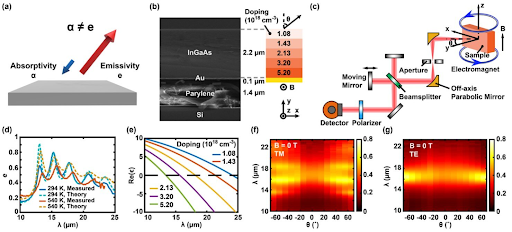In a groundbreaking achievement, a research team from Pennsylvania State University has shattered a 165-year-old physics principle known as Kirchhoff’s law of thermal radiation. This discovery, detailed in a paper available on the arXiv preprint server and set to be published in *Physical Review Letters* on June 23, 2025, was selected as an “Editors’ Suggestion” by the journal. The breakthrough promises significant advancements in energy harvesting, heat transfer, and infrared sensing.
Kirchhoff’s law, established in 1860 by German physicist Gustav Kirchhoff, states that a material’s ability to absorb electromagnetic radiation, such as sunlight or X-rays, at a specific wavelength and angle must equal its ability to emit radiation at the same wavelength and angle. While this law was first violated two years ago, the Penn State team, led by Assistant Professor Linxiao Zhu, achieved a far stronger break, demonstrating a contrast of 0.43 in non-reciprocity over a broad 10-micrometer wavelength band—surpassing previous measurements of 0.22, 0.12, and 0.34 with narrower bandwidths.
This significant violation of Kirchhoff’s law opens new possibilities for controlling thermal radiation, with applications in solar energy, heat management, and sensing technologies. “The capability to strongly violate Kirchhoff’s law provides a dramatically new way to control thermal radiation and can improve energy and sensing applications,” said Zhenong Zhang, co-first author and a doctoral candidate in mechanical engineering at Penn State. For example, nonreciprocal solar cells could redirect emitted energy to another cell, boosting overall efficiency to theoretical thermodynamic limits.
The researchers plan to further explore non-reciprocity in thermal radiation across different materials, potentially unlocking even more applications. This discovery marks a pivotal step toward revolutionizing energy conversion and thermal management technologies.
**









